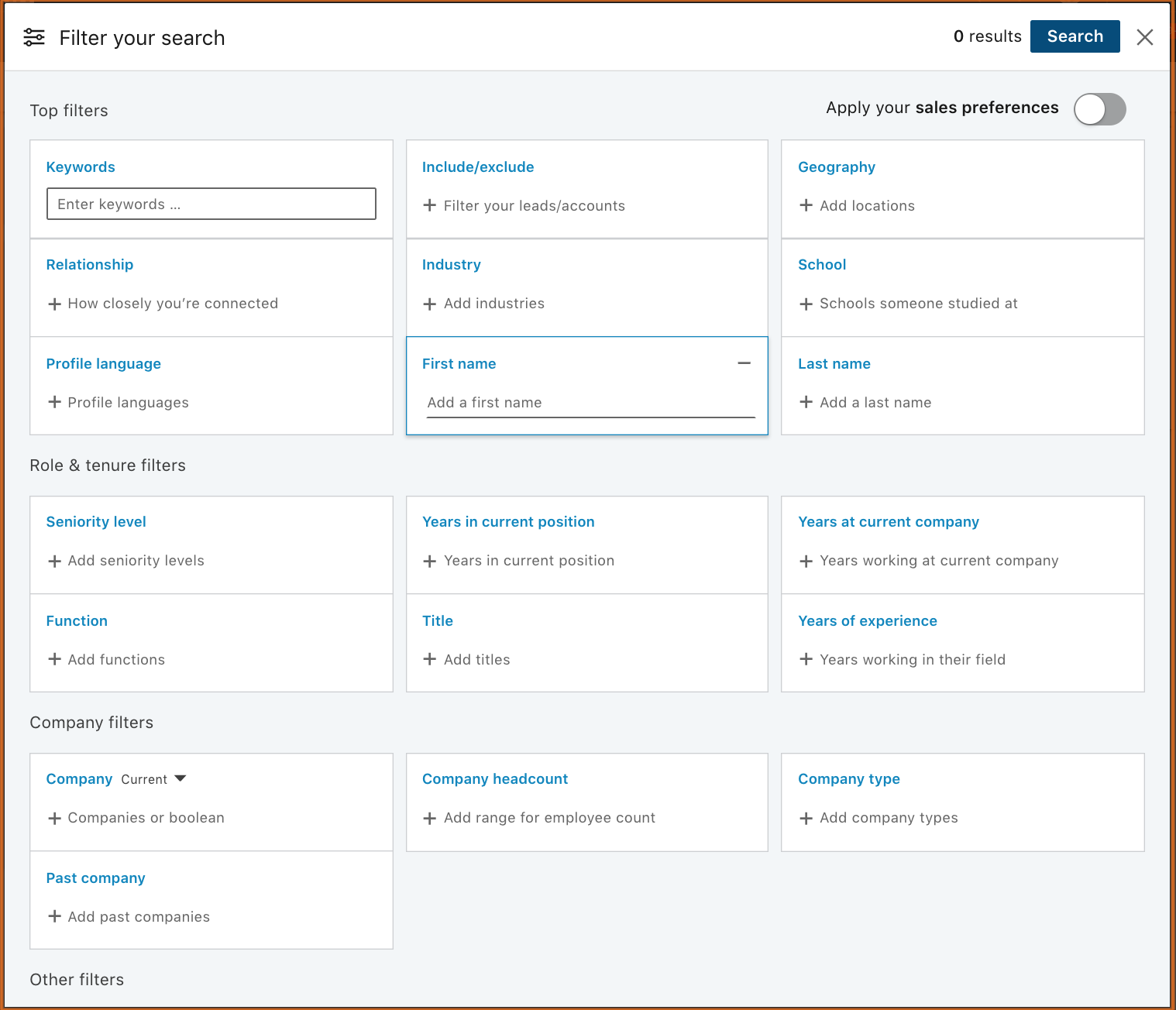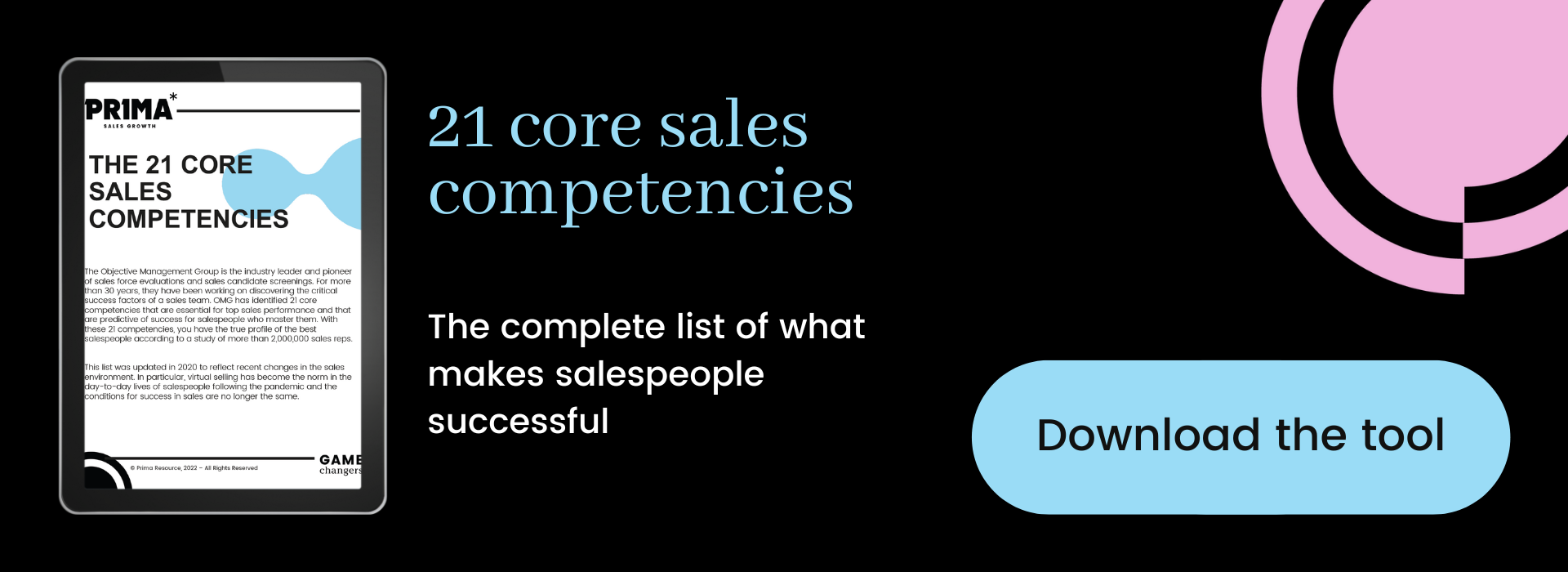Do you know how to use LinkedIn Sales Navigator to prospect?
For a long time, like you, I used to cold call to reach decision-makers like vice-presidents and CEOs. As you know, these people are tough to get on the phone so it requires considerable effort and produces very mixed results.
To drastically increase my chances of getting in touch with them, I needed a solution. Linkedin’ Sales Navigator has been my tool of choice since 2015. It’s used not only to target and communicate with prospects but also to get real appointments.
LinkedIn is a must for any sales team. It makes it possible to recruit elite salespeople, as well as to build and enrich the network of contacts you need to build a strong sales pipeline.
LinkedIn Sales Navigator is the perfect tool to quickly find the right prospects and build a relationship based on trust. It’s also a great tool to establish and monitor a robust prospecting process.
Here’s some proof:
A few years ago, I was determined to get an appointment with the CIO of a government agency. My first step was to find him on Sales Navigator. Then I sent him this InMail:
|
Hello, Mr. X, I’m Louis Larochelle from COMPANY NAME. I’m contacting you because we help CIOs and CTOs like you who are frustrated by the rising costs of managing wireless devices. Companies of your size all face two problems with managing wireless devices. First, the variety of devices is becoming more complex. Second, corporate data is increasingly at risk due to the access granted to mobile devices. Does your organization face any of these problems? Are you trying to solve these issues? If so, I’d like to meet with you to assess the extent to which our services could address this situation. See you soon, Louis |
As you can imagine, the CIO accepted my InMail and offered to meet him and his IT director.
It isn’t my only example. LinkedIn’s Sales Navigator has allowed me to get many other appointments. However, I want to say that most of the time you have to combine InMail, emails and phones calls to reach your prospect.
Key behaviours of decision-makers (according to LinkedIn)
- 92% of B2B buyers agree to start a conversation with a professional recognized as an industry expert.
- 88% of decision-makers accept second-degree connections, i.e. with at least one common contact in the network.
- 86% of decision-makers will listen to sales professionals if they give information about their industry.
Steps to prospect with LinkedIn
- Create the perfect profile;
- Build a network;
- Request introductions from your contacts;
- Contact your prospect directly.
1. Create the perfect LinkedIn profile
Your profile needs to showcase your company. To do that, clearly define the following three aspects:
- The services you offer;
- The problems you solve;
- The industries you work with.
2. Build a network
After you optimized your profile, it’s time to build a network. Using the Sales Navigator’s search tool, the first thing you want to do is target people you know or who work in the same field as you. They can be friends or former colleagues as well as satisfied customers.
Ideally, you’ve invited those folks individually to join your network, and they have accepted, making it a first-level relationship. At a minimum, save these contacts as leads to fill your newsfeed with everyone’s updates, likes or comments.
What’s important is that the people you follow are most likely connected with your prospects.
At this stage, it isn’t necessary to connect with thousands of people. It’s best if you shot for 500 contacts.
I suggest two techniques for you to get in touch with these prospects:
Technique #1
Choose this method if you have access to your contacts’ network. When you do, you can review and study it by using LinkedIn’s filters to identify prospects to whom your contacts could introduce you.

Technique #2
Conversely, you can look at the profile of the prospect you want to connect with and discover the people among your contacts who might introduce you to them.

3. Request introductions
It’s time for step 3. I’ll go into more detail here because this yields the best results.
- Find the right prospects and study their profile. When you do, you’ll see a section of their profile listing all the members of your network who can introduce you to them.
- Once you have identified someone in your network who can help you, ask your connection to introduce you. If she knows the person well and accepts to connect the two of you, you have the green light to proceed.
- Help them help you. Take the time to thank your contact and recommend he or she introduce you to your target prospect by email.
Use this email template that, in turn, they can modify before sending it off:
|
Sincerely, YOUR CONTACT NAME |
When you get the email, reply to your contact and prospect simultaneously with this template:
|
Thank you, YOUR NAME |
Sales tip: Letting the prospect know your busy is voluntary and vital. It’ll show them you’re busy and that you aren’t desperate to contact them immediately. You’re also giving the prospect some time.
This email can be an excellent opportunity to invite a prospect to consult your company blog, if applicable.
Don’t forget to keep a record of the work you’ve done and document everything, both regarding prospects and sales opportunities!
4. Contact your prospect directly
Requesting an introduction will warm-up the lead. A call that would have been a cold call becomes a warm call. As a result, you’ll get the opportunity to have a 5 to 10-minute conversation with your new prospect.
If you follow the Baseline Selling methodology, you’ll be able to use this first exchange to identify at least one of their problems and which will justify a one-hour face-to-face meeting. During your 60-minute session, you’ll have the opportunity to discover their company’s needs, their compelling reasons to change, the degree of urgency as well as quantification their problem.
Conclusion
Sales Navigator allows salespeople to get the most out of LinkedIn. Requests for introduction (not to be confused with the reference request) have been around for a long time, but with the help of this social network, they’re accelerated.
The tactics I shared above are part of any social selling efforts. It doesn’t replace more traditional approaches (phone and e-mail), but it is an additional and highly useful tool.
To take full advantage of LinkedIn and increase your sales results, I always recommended subscribing to a Linkedin Premium account combined with Sales Navigator. Here are the immediate benefits you will get:
- All the people who have consulted your profile;
- See the complete profile of the members of your network;
- Send 15 emails per month;
- Perform advanced searches using dozens of filters;
- View hundreds of profiles per search;
- Receive several lead suggestions each week based on the target audience;
- build a sales funnel within the Sales Navigator;
- Follow the news feed of saved prospects.
Note: Originally published on November 23, 2018, this post has been reviewed to ensure its comprehensiveness and accuracy.







